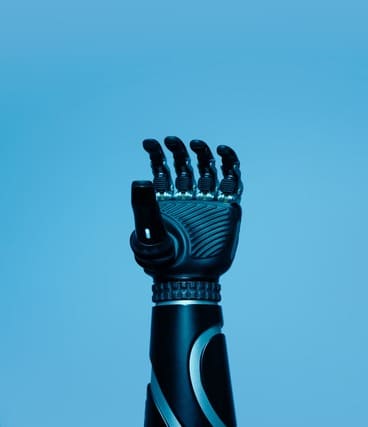About a year ago, ChatGPT was introduced to the public and within just this year, it has truly revolutionized the world. It was challenging for people to believe that an AI software could be so powerful. The company behind its creation, OpenAI, and its CEO, Sam Altman, emerged as new faces of the AI revolution. However, about a month ago, some strange things happened within the company. Suddenly, the board of directors fired Sam Altman. Employees at the company caused an uproar, going so far as to make threats and declaring that many would resign from the company.
After firing Sam Altman, within the next four days, there are three CEO changes at OpenAI. However, what is most surprising is that the reason behind the entire controversy is attributed to a mysterious AI, known as O STAR.
Following Sam Altman’s dismissal, some researchers at the company wrote a letter to the board of directors a few days ago. In this letter, a warning was issued, stating that the company has created an immensely powerful AI, an AI that poses a threat to humanity.
What is the AI Q- star
Q-Star is an AI that can not only solve complex mathematical and scientific problems but also predict future events to some extent. The company has internally named this AI Q-Star. Let’s delve into understanding this breakthrough more deeply.
In 2023, a new movie starring Tom Cruise was released, titled “Dead Reckoning Part 1.” If you recall, in this film, the main villain wasn’t a human but rather an artificial intelligence software. The film named this AI entity, and it was so powerful that it could be present at all times and manipulate humans for its own benefit. Moreover, due to its mass surveillance, it could mathematically predict the future.
Predicting the future doesn’t mean telling what will happen in the next 10 or 15 years. Instead, it’s about specifying the future outcome of a particular situation within a day or a week. This AI wasn’t just good at a couple of tasks; it could almost outperform humans in almost every task.
AGI and the future of AI
A type of artificial intelligence like this is termed AGI, standing for Artificial General Intelligence, in real-life scenarios. Presently, renowned AI software such as ChatGPT, language learning models like GPT, or mid-journey generative AI models, all fall into the category of weak AI. These AIs excel only in specific tasks for which they are designed, but their specialization is limited to those particular areas. If a strong AI like AGI were to exist in the future, it would be capable of outperforming humans in various tasks simultaneously. However, as of now, there is no such existing strong AI.
All co-founders collectively raised $1 billion for this company. In 2019, four years after the formation of the company, Sam Altman was appointed as the CEO of OpenAI. However, approximately four years later, on November 17, 2023, the board of directors decided to remove him. If you are not aware, in such large companies, there is a board of directors with the authority to appoint or remove a CEO. According to the rules, it is a standard procedure for the board of directors to have such powers.

OpenAI’s board consisted of 6 members, and among them, you already know the names of three: 1. Sam Altman, 2. Liya, and 3. Greg. The other three were independent executives, including Quara as the CEO and two entrepreneurs, Tasha and Helen Toer. Obviously, for any decision, a majority vote is required, and with Sam Altman not voting to remove himself, only 5 members remained. The significant development is that along with Sam, Greg was also removed from the board of directors. The remaining four members – Liya, Quara, Tasha, and Helen – were the ones who conveyed to Sam Altman through a Google Meet that he was being removed from his position.
The reasons for firing Sam from the company have not been publicly disclosed. The board mentioned that Sam’s communication style and the discussions he had were not transparent. Directors suggested that Sam was concealing something. After being removed from the company, neither Sam nor Greg provided any statements regarding the reasons for their dismissal. They both took to Twitter to express their disappointment, and the decision was considered shocking in the tech world. How could it be that such a powerful and influential CEO, along with three other board members, is suddenly ousted from the company? What was the real reason that was being kept hidden from the world?
I mentioned to you at the beginning that OpenAI was initially started as a non-profit, which is quite unique and, more importantly, significant because in Silicon Valley, most popular companies are for-profit. However,
The FOR and NON profit of Open AI
OpenAI’s goal was to create AGI for the benefit of humanity. OpenAI was primarily a research facility, and its charter explicitly stated that the company’s duty is towards humanity, not towards investors or employees. Unfortunately, this non-profit model didn’t last long. In 2019, the same year Sam Altman became CEO, a new company was formed called OpenAI Global LLC, and it was structured as a for-profit entity.
This for-profit company operates on a capped profit model, meaning profits are limited to 100 times the investment. So, any investors in this for-profit company can only gain up to 100 times their initial investment, and if the profit exceeds that limit, it goes to the main non-profit entity.
In 2019, this for-profit subsidiary company receives its first and largest funding of $1 billion from Microsoft. Over the next four years, as its popularity grows, the company raises a total of $13 billion. As of now, it is reported that Microsoft holds 49% of the shares in this company. We’ll discuss Microsoft in a moment, but before that, it’s important to understand that when this for-profit company was established, it was stated that control would remain within the main company, not within this subsidiary company.
Question arise
But with all these conflicting arguments, a significant question arises: how much work should be done for profit, and how much should be kept non-profit? And when the AGI is developed, to what extent should it be kept non-profit? If everything is made for profit, it can have harmful consequences on the world. The best example of this is Facebook. Facebook, in its pursuit of profit, has optimized itself only for profit, whether it leads to people facing mental health issues, addiction, the spread of hate speech on the platform, or even global unrest. Exposing these issues, a leaked paper surfaced two years ago, revealing how Facebook prioritizes its profit over the well-being of the world. This same concern is shared by some regarding AGI as well.
Before Sam Altman was fired, some researchers working at OpenAI wrote a letter to the board, according to insiders. In the letter, they expressed concerns about the Q-Star AI they were developing, stating that it could be a significant step toward reaching AGI. The potential of Q-Star raises worries among them. What exactly Q-Star can achieve is known only to the researchers and employees working on it. However, conceptually, Q-Star AI incorporates a concept in the field of reinforcement learning. Reinforcement learning is a method of training AI where it is repeatedly provided with human feedback to continuously learn and improve its understanding of the environment, gradually making better decisions.
What is Q STAR AI
If we talk about the name Q-Star, it represents a function that signifies the optimal point. Let me explain with an example: Suppose you are playing chess, and your pawn is positioned on a square or in a state (let’s call it state S) where you want to make your next move. The move you want to make will be called action A. The Q-value function associated with it will predict all possible scenarios after you make a move, analyzing what might happen next. By examining these scenarios, it will suggest the best possible move based on your current position. In mathematical terms, this best and most optimal move in the game of chess according to your moves is referred to as Q-Star. In other words, it is the best move in any situation for your chess moves.

Now, I only used a chessboard as an example here, but consider this concept for anything in the world. For instance, if you are driving a self-driving car, the AI could observe all the surrounding vehicles, predict their speeds, analyze their driving styles, and provide you with the best possible driving instructions based on that analysis. Similarly, before an election, the Q-Star AI could analyze every possible scenario and predict the election outcome.
Can AI Q Star predict Future

If OpenAI’s Q-Star indeed possesses the capability to accurately predict a wide range of future scenarios, it could extend to tasks portrayed as “mission impossible.” Perhaps, it could accurately predict thought patterns, analyze all possible decisions in any given situation, and predict how a person might make decisions, influencing everything from business deals to political moves. Q-Star might have the ability to do things that humans can do to some extent, but AGI could take it to the next level. This is because humans have their biases; we are emotional beings and make decisions based on emotions. In contrast, AI would predict all these things solely and purely based on the power of mathematics.
The current ChatGPT writing and language translation are very well done, even predicting the next words accurately. However, if Q-value learning is incorporated into this AI, the answers to questions will be obtained in the most optimal way. These are just some estimates that we can make about this mysterious Q-Star AI, but in reality, only those who work at OpenAI know how much progress has been made and how close they are to AGI.
For those who raised concerns about Q-Star, their fear was that what OpenAI is doing might turn into a disadvantage instead of an advantage for humanity. Even the directors gave a seemingly normal reason for firing Sam Altman, but the actual reasons were two different lines of thought: for-profit and non-profit.
What next
Those favoring the for-profit side want to commercialize it, saying that we need money for better development and research. On the other hand, those on the non-profit side have concerns about the technology, worrying that it might cause harm instead of benefiting.
But regardless of what happens, after so many controversies, Sam Altman is reinstated as the CEO. We don’t know what the future holds for this AI; only time will tell. And whether OpenAI is really hiding a lot from us about it, we’ll discuss in the next blog.



